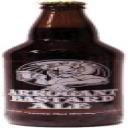Yahoo Answers is shutting down on May 4th, 2021 (Eastern Time) and beginning April 20th, 2021 (Eastern Time) the Yahoo Answers website will be in read-only mode. There will be no changes to other Yahoo properties or services, or your Yahoo account. You can find more information about the Yahoo Answers shutdown and how to download your data on this help page.
Trending News
Inexperienced PC owner needs help regarding hard disk (external one)?
While I was transferring files from my external hard drive to the desktop PC, I think the computer stopped responding so I had to manual restart it. Afterwards, I could not use my external hard drive because it cannot be detected. I tried it on other laptops and PCs but it still is not detected. I also tried putting it on a laptop internally but is says : No IDE device, when performing the BIOS hard disk test. What else could I do? The hard disk is not yet dead since I am hearing it starting when it is connected externally. The enclosure works fine with other hard disks except for the one we are talking about so the cable and enclosure are alright. Any ideas? Thanks a bunch!
Other hard disks were detected on the laptop internally so I guess the problem is with the hard drive. What could I do to fix it up?
Hmm.. I checked that one also. I made sure it was plugged in fully.
But I tried other hard disks on the enclosure and it works fine. So the problem is in the disk right? Could there be a way we could chat? thanks a lot.
Thanks a bunch. I will add you up in my yahoo messenger. :-)
How do I do this part: "Be sure to change the jumper on the HDD and go into setup to set Drive 1 IDE to 'auto' prior to doing this."
Just read your edit tag. So the hard disk do have issues. But it still runs as I hear it spinning inside without weird noises.
thanks a lot nippy.. you've been a great help!
2 Answers
- 1 decade agoFavorite Answer
External HDD's are simply IDE HDD's placed in a case with an IDE to USB adapter. A lot of times, the HDD can become disconnected slightly from the adapter, causing computers to be unable to read them. Before tossing the HDD, open the case and take a look. You may have to push the HDD back onto the adapter. I've seen this happen to both IOmega and Firelite drives so far.
Good luck!
*edit: you opened the HDD case already? In that case, test the HDD on your computer (if possible). If it's the same size HDD as your computer, you can slave it into a ribbon cable (that is, if your PC supports IDE) and make sure it's still accessible. Be sure to change the jumper on the HDD and go into setup to set Drive 1 IDE to 'auto' prior to doing this. If it works, then there's a problem with the adapter built into the external case.
*edit again: you'd be testing whether the drive still works or not, not whether the PC itself is able to read other drives. This will isolate the problem to the adapter itself...troubleshooting through the process of elimination. You've already eliminated a USB issue with your PC and already ruled out the cable situation, therefore by testing the HDD itself within your case, if it works it will single out the adapter as the only possible cause of the issue. Oh, and I'd be glad to chat, but it's not possible while I'm at work. The filters here are insane.
*edit, last time: I just reread your question and I think by 'enclosure' I misunderstood what you were referring to. If you connected another HDD to the adapter and it worked, that does, indeed, indicate an issue with the original HDD itself. Sorry for the confusion.
*edit, last time for real: haha, okay...I haven't used yahoo messenger in about five years, but perhaps I'll swing by sometime.
*edit, who knows if it's the last: Alright, the jumper is found next to the pins the cable connects to on the drive. Remember where it is set to right now. On the drive there is usually a guide for jumper settings...you'll want to set it to 'slv' or 'slave' (that is, if you're going to test the drive within your PC case). After changing the jumper, attach the drive to the same cable your PC's HDD is attached to (make sure your PC is powered OFF before doing this!). You may need to disconnect the cable from another drive (ie. your cd-rom or DVD-rom drive) and use that connection. If you do the latter, you won't need to make any changes in the BIOS. If you do need to make changes in your BIOS, start up your PC and watch it go through power-on self test. It should tell you which key to press to go into 'setup' (usually F2). Hit the key before POST is completed to go into setup, and change your drive configuration to 'IDE Disk 1 auto'. This will ensure your computer is prepared for the existence of the disk. To be honest, though, if your external drive case is working with other drives, this entire process is most likely pointless. I think it's already determined that the problem is with the drive itself. You might be able to hear it running, but that doesn't necessarily indicate it's still functioning properly.
Source(s): comp. tech for a living. - Anonymous1 decade ago
Please check the interface you are using to connect. Interface cables are more pron to damages than the devices.



